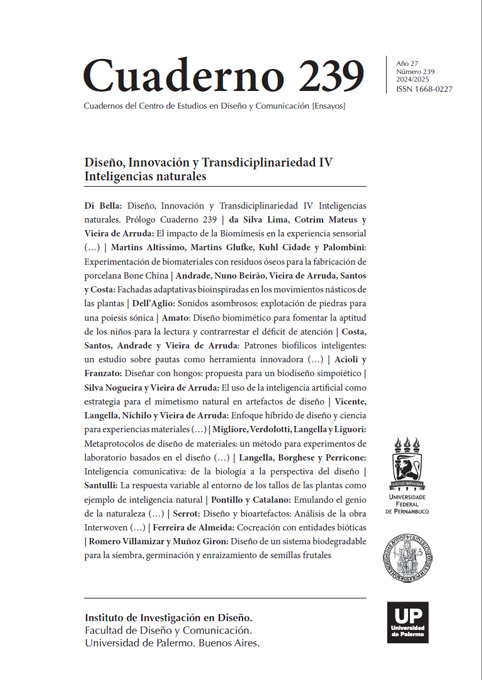Material design meta-protocols: a method for design-driven experiments in the Lab. The case of nature’s porous intelligence as a strategy for materials innovation
Abstract
This research explores a combination of design and materials science to develop a novel approach to materials’ porosity
References
Anzai, Yuichiro, and Herbert A. Simon. “The theory of learning by doing.” Psychological
review 86.2 (1979): 124.
Ashby, M. F., & Johnson, K. (2013). Materials and design: the art and science of material
selection in product design. Butterworth-Heinemann.
Bak-Andersen, M. (2018). When matter leads to form: Material driven design for sustainability.
Camere, S., & Karana, E. (2018). Fabricating materials from living organisms: An emerging
design practice. Journal of Cleaner Production, 186, 570–584. https://doi.org/10.1016/j.jclepro.2018.03.081
Capasso, I., Liguori, B., Verdolotti, L. Caputo, D.; Lavorgna, M., Tervoort, E. (2020) Process
strategy to fabricate a hierarchical porosity gradient in diatomite-based foams by 3D printing. Scientific Report, 10 612. https://biblioproxy.cnr.it:2481/10.1038/s41598-019-55582-0.
Los autores/as que publiquen en esta revista ceden los derechos de autor y de publicación a "Cuadernos del Centro de Estudios de Diseño y Comunicación", Aceptando el registro de su trabajo bajo una licencia de atribución de Creative Commons, que permite a terceros utilizar lo publicado siempre que de el crédito pertinente a los autores y a esta revista.


